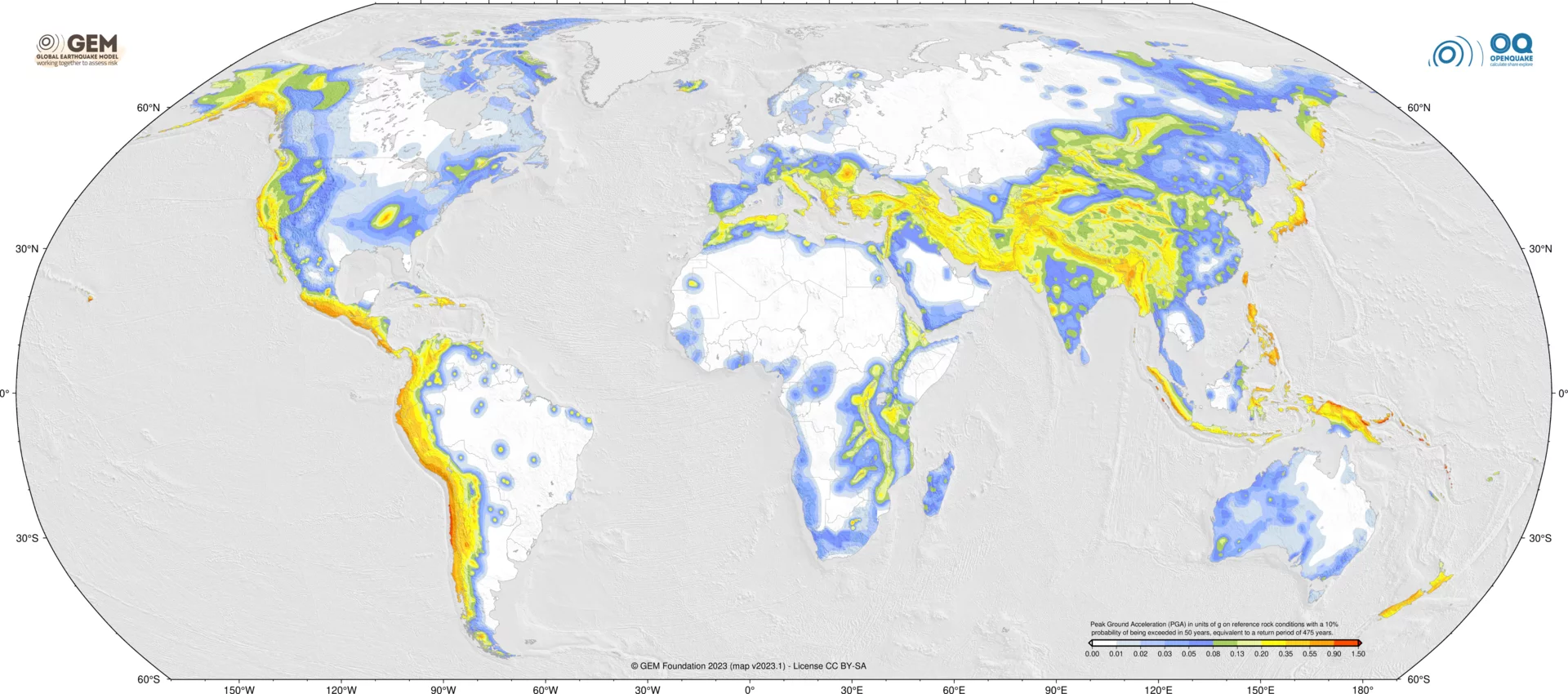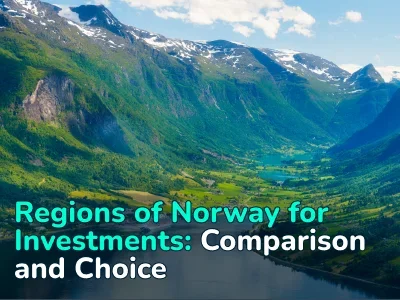
Top 5 Countries for Real Estate Investment with the Lowest Earthquake Risk
Earthquakes can cause significant damage to homes and infrastructure, posing risks to human lives. Therefore, when choosing a location for real estate investment, it’s crucial to consider seismic risks. In this article, we analyze factors influencing location choice and highlight promising real estate markets with low earthquake risks based on the latest data.
How We Assessed Seismic Risks
For an objective analysis of seismic conditions across global regions, we used authoritative sources, including the Global Seismic Hazard Map version 2023.1, the European-Mediterranean Seismological Centre (EMSC), national geological surveys, and data from the Global Assessment Report on Disaster Risk Reduction (GAR 2025).
Our analysis focused on the following factors:
- Geological structure and tectonic features: history of major fault lines and proximity to lithospheric plate boundaries.
- Historical seismic activity: frequency and intensity of earthquakes in the region.
- Building quality and seismic standards: compliance with updated 2024–2025 seismic-resistant construction standards.
- Regional preparedness: availability of monitoring and alert systems, evacuation plans, and shelters.
- Seismic infrastructure: presence of anti-landslide structures, seismic isolation in buildings, and other protective measures.
- Impact on the real estate market: how seismic risks affect property prices and investment attractiveness.
Based on these data, we identified the most geologically stable regions for real estate investment.

Seismic hazard map
Countries with Minimal Earthquake Risk
While some countries are highly prone to earthquakes, others are among the safest in terms of seismic threats.
Canada
Located within the stable ancient core of the North American Plate, Canada experiences low seismic activity in most regions, with major destructive earthquakes being rare. A notable exception is the Pacific coast of British Columbia, where seismic risks are significantly higher. In March 2025, significant updates to the British Columbia Building Code tightened requirements for seismic resistance in construction.
Australia
The continent lies on a stable section of the lithosphere, consisting of ancient crystalline rocks. The region is seismically inactive, with strong earthquakes occurring very rarely. According to the Seismology Research Centre’s 2025 data, earthquakes up to magnitude 4.9 (e.g., the April 23, 2025 event near Singleton) are recorded, but most events are below 3.0.
Norway
This Scandinavian country is situated on the ancient Baltic portion of the Eurasian Plate, where earthquake risks are minimal. According to earthquakelist.org, only 18 earthquakes of magnitude 4+ have been recorded within a 300 km radius over the past 10 years, with the strongest being magnitude 5.2 in 2022. Seismic risks are slightly higher only in the Svalbard and Jan Mayen.
Denmark
One of Europe’s most seismically stable countries, Denmark lies on the Baltic Shield with ancient rocks. Monitoring data shows only one earthquake of magnitude 4.0 in 2015 over the past decade. Earthquakes, even of low intensity, are almost nonexistent here.
Brazil
This vast country lies within the South American Plate, most of which is characterized by low seismicity. Although statistics show 341 earthquakes of magnitude 4+ over the past 10 years, most occur in remote Amazonian regions and at significant depths. Risks are slightly higher only in northern Brazil near the Amazonian Trench.
Other Safe Regions
Regions with minimal earthquake risks also include Finland, Sweden, most of Russia (excluding the Caucasus, Kamchatka, Altai, and Baikal Rift Zone), Poland, Czech Republic, Hungary, Romania, Belarus, Latvia, Lithuania, Estonia, Germany, the Netherlands, Belgium, France (except the southeast), the United Kingdom, South Africa, Botswana, and Namibia.
Leaders in Safety Among Cities and Regions
Canada — most promising regions:
- Ottawa and the National Capital Region.
- Toronto, Mississauga, and suburbs.
- Most of the expansive Ontario province.
- Montreal, Quebec City, and other cities in Quebec.
- Saskatoon, Regina, Winnipeg, and other Canadian prairie cities.
Australia — safe investment areas:
- Canberra and the Australian Capital Territory.
- Adelaide and surrounding areas of South Australia.
- Most of New South Wales, excluding the coast.
- Central Australia — areas around Alice Springs.
- Inland areas of Victoria and Queensland.
Norway — geologically stable regions:
- Oslo and adjacent Eastern Norway.
- Inland areas of southern Norway.
- Cities of Stavanger and Trondheim with their surrounding areas.
- Northern Norway, excluding the Svalbard and Jan Mayen archipelagos.
Denmark — virtually the entire country is safe:
- Copenhagen and the Greater Copenhagen area.
- Aarhus and the central part of the Jutland Peninsula.
- Other major Danish cities: Odense, Aalborg.
Brazil — regions with the lowest seismic risk:
- Rio de Janeiro area and southeastern Brazil.
- Central Brazilian states — Federal District, Goiás.
- Northeast Brazil, excluding areas bordering the Amazon.
- São Paulo area and parts of Paraná and Santa Catarina states.
Recommendations for Buying Property in Earthquake-Prone Areas
If you decide to invest in real estate in a region with elevated seismic activity, take the following precautions:
- Thoroughly study the earthquake history of the area, focusing on the intensity, frequency, and consequences of seismic events.
- Consult professionals to assess the seismic resistance of the chosen property. Older buildings may require significant structural reinforcement.
- Prioritize high-quality new constructions from reputable developers that comply with strict 2024–2025 seismic standards.
- Opt for low-rise, solid structures with lightweight designs, as they better withstand earthquakes.
- Evaluate local seismic monitoring and alert systems, and review evacuation plans for the building and area in case of emergencies.
- Secure insurance against earthquake-related damage or destruction. In 2025, new parametric insurance products have emerged from major companies like Liberty Mutual Re and HDI Global.
Additional Factors When Choosing a Region
Beyond low seismic risk, consider other factors that impact safety and investment attractiveness:
- Protection from other natural disasters: hurricanes, floods, landslides, etc. Ideally, choose regions with a mild climate and low risk of natural disasters.
- Economic stability and real estate market development: investments in countries with growing economies and high housing demand are more profitable.
- Legal system and construction regulations: regions with clear legislation offer better protection for property owners.
- Transportation and Infrastructure: proximity to business centers, airports, and transport hubs is crucial.
- Socio-political environment and crime levels: safety for life and business is a key criterion for real estate purchases.
- Quality of life, ecology, and services: these factors enhance the liquidity and value of your property.
Thus, the optimal choice is economically stable and safe regions with low seismic risk in all aspects.
Frequently Asked Questions
Which countries are considered the safest in terms of earthquakes?
Which cities and regions of these countries are least exposed to seismic risks?
Is it possible to completely avoid the risk of earthquakes when buying a home?
Besides seismic factors, what other factors are important to consider when choosing a location to buy real estate?
Author
I am responsible for editorial work. I write expert interviews and guides.





















